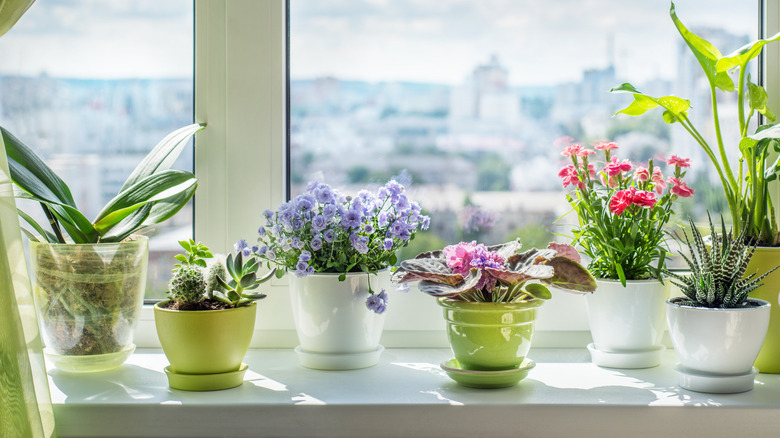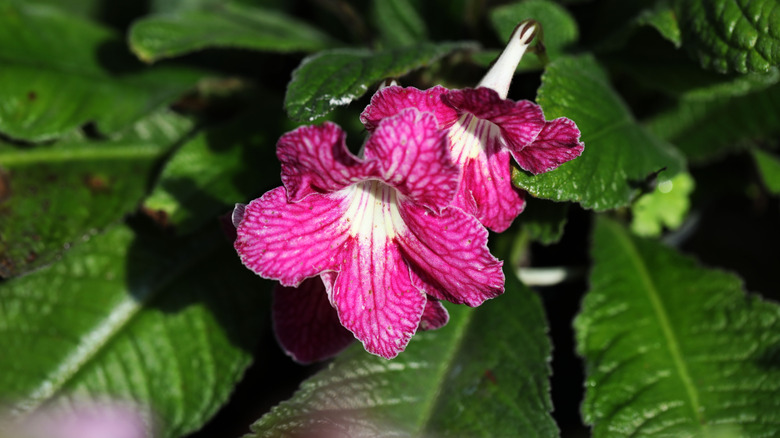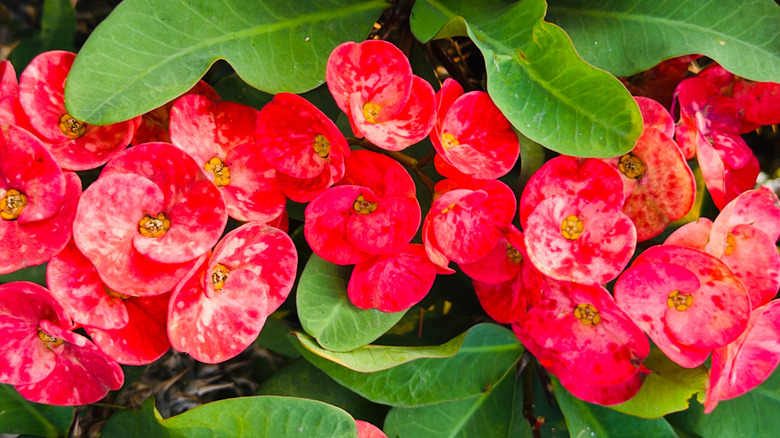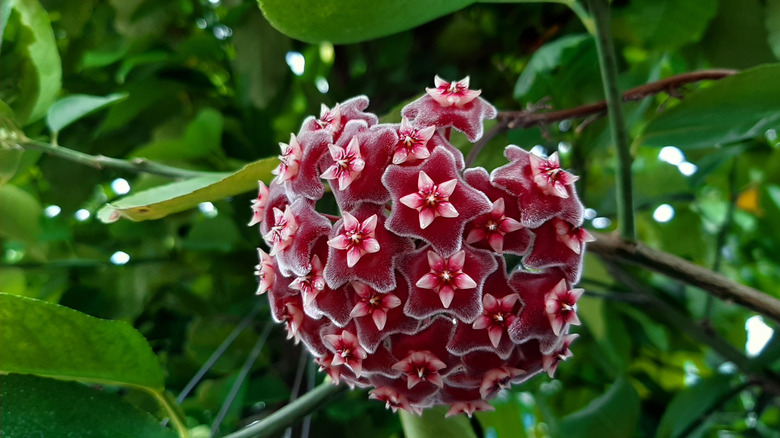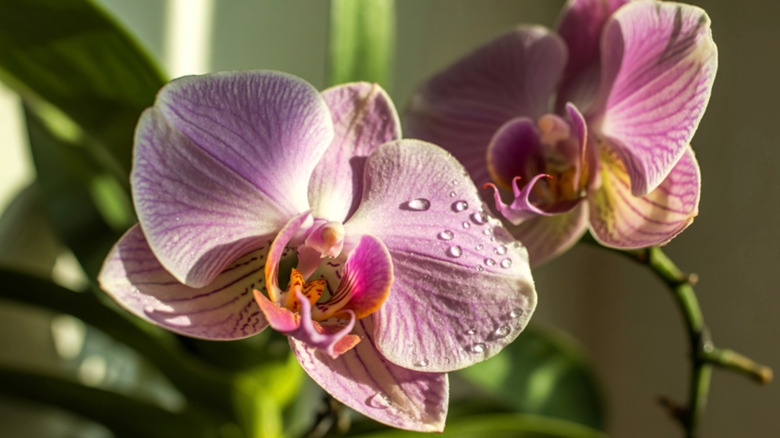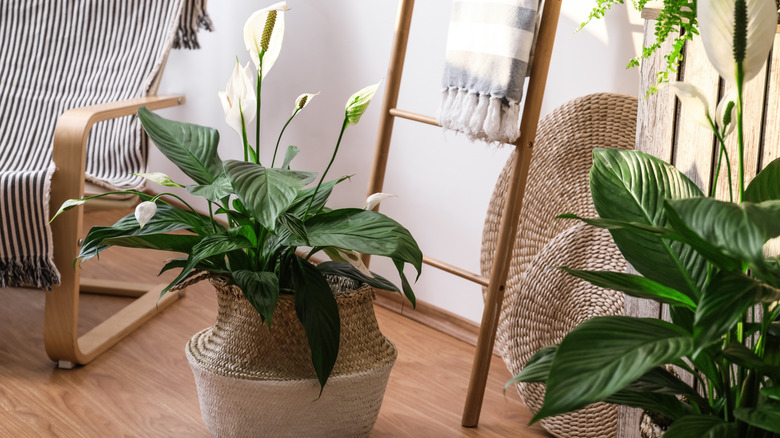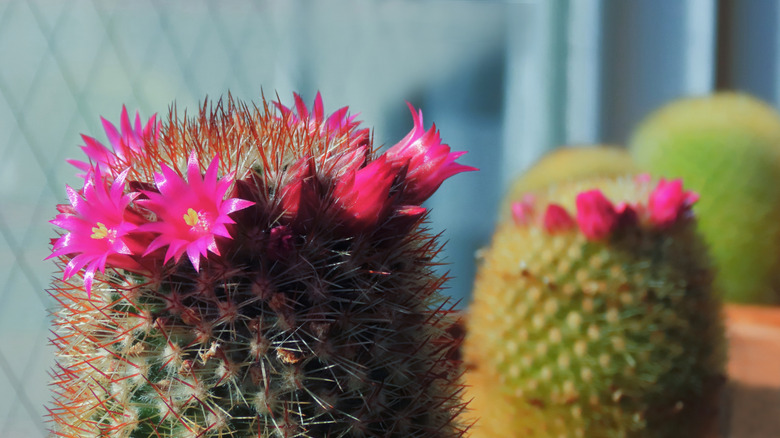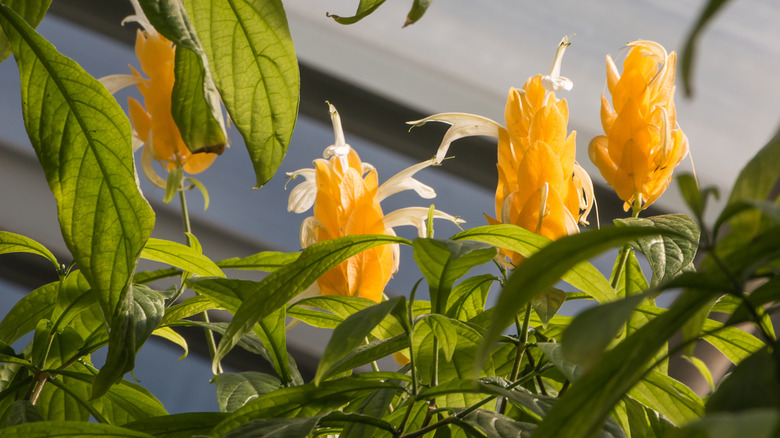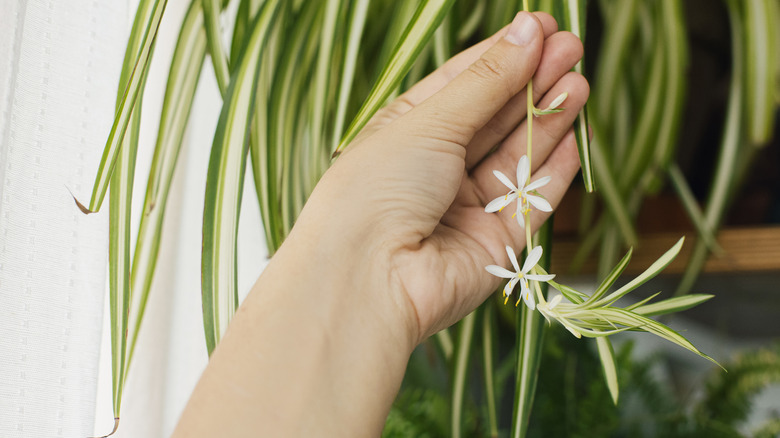10 Indoor Houseplants You Can Enjoy For Their Blooms Year Round
Keeping houseplants is a great way to connect with nature during the many hours we spend working and relaxing in indoor spaces. Foliage plants are certainly soothing in this regard, but when indoor plants bear flowers, they provide even more enjoyment, delighting the senses with colors and sometimes fragrances. Some indoor plants do an even better job by producing blooms that you can enjoy throughout the year. So even when the ground is covered with snow outdoors, or it's too hot to leave the comfort of the air conditioning, these houseplants can still engage your senses and fill you with delight all year long.
We've selected a number of year-round blooming indoor plants so you can learn what types of blooms to expect and when to expect them. Before you make your choice, it's important to keep in mind that indoor plants aren't just part of the décor; they are living things that require light, water, and care to prosper. To enjoy the blooms of these plants indoors year-round, you have to do your part — provide the ideal growing conditions that will make those flowers appear. For instance, houseplants need to get enough light to stimulate blooming, but some indoor plants will suffer from too much sunlight, so it's important to take note of the precise needs of each plant. Before you bring any of these flowering houseplants home, check below to learn about their needs and identify those that are the best fit for your home or office.
African violet
With fuzzy leaves and reliable blooms, African violets (Streptocarpus ionanthus) are popular houseplants that bear flowers in shades of blue, purple, pink, or white. These blooms can appear year-round, especially when these indoor plants enjoy their ideal growing conditions. You can encourage more blooms on your African violets by keeping them in a comfortable temperature range of 60 to 80 degrees Fahrenheit, and growing these houseplants in medium, indirect light, in well-draining, moist soil.
Cape primrose
Related to the African violet, cape primroses (Streptocarpus saxorum) have leaves that can be larger than those of their houseplant relatives and bear perky, tubular blooms. Some cape primrose plants, such as those of the Crystal series, provide blooms to enjoy all year long, and this is one of the reasons why people are loving the streptocarpus plant. To keep these indoor plants producing their flowers in shades of blue, purple, white, pink, or red, they need bright, indirect light with no more than a few hours of gentle, direct sunlight, and soil that dries between waterings.
Crown of thorns
For those seeking something a bit edgier that will go well with a succulent or cactus collection, crown of thorns (Euphorbia milii) is a spine-covered indoor plant that produces colorful, flower-like modified leaves known as bracts, creating a colorful display all year long. To enjoy those red, pink, or white bracts, indoor gardeners should grow crown of thorns as a houseplant with exposure to at least six hours of direct sunlight daily, and let the soil dry out before watering.
Hoya
Hoya species may be loved for their diverse foliage, but there is no denying that these houseplants have remarkable flowers. Star-shaped blooms are held in colorful clusters, and depending on the hoya type, can appear all year long when grown indoors. You can even get all-natural scents in your home by growing different kinds of hoya. Since there are hundreds of species of hoya, there is no one-size-fits-all care strategy. To enjoy flowers on the most common hoya types, these indoor plants need a few hours of direct sunlight, and loose, well-draining potting mix that dries between waterings.
Lipstick plant
Lipstick plant (Aeschynanthus radicans) is a unique houseplant that boasts rich red flowers that look like lipstick, and can appear during most of the year — in spring, summer, and fall. To ensure healthy plants, indoor gardeners should provide lipstick plants with indirect, bright light and well-draining, moist soil. To enjoy a steady supply of lipstick-shaped blooms, feed lipstick plants with an orchid fertilizer, following the directions on the package. Like hoyas, these indoor plants work beautifully trailing out of hanging baskets.
Moth orchid
While orchids may seem high maintenance, moth orchids (Phalaenopsis ) are one of the types of orchids that make the easiest houseplants. Moth orchids provide large, showy flowers that can be enjoyed in exchange for little care. Their flowers come in many different colors and patterns, and can remain on plants for several months, with indoor plants reblooming throughout the year. These plants need a fast-draining, bark-type soil that is allowed to dry between waterings. To encourage blooms, moth orchids need indirect, bright light and regular doses of orchid fertilizer, applied according to the product directions.
Peace lily
Peace lilies (Spathiphyllum spp.) are popular as indoor plants because they are low-maintenance and can produce their large white flowers at any time of the year. These plants survive easily as houseplants thanks to their tolerance of low light levels. Bright indirect light is even better and will provide more flowers to enjoy, if you can provide it. As for peace lilies' water needs, allow the soil to dry before watering.
Pincushion cactus
Many types of cacti can be grown indoors as houseplants — and pincushion cactus (Mammillaria spp.) is one of the cacti you should grow that bloom with colorful flowers. Funnel-shaped flowers are born on these rounded or column-shaped cacti, with blooms in shades of red, white, pink, yellow, or purple, depending on the species. While they'll naturally bloom in spring and summer, provide these spine-covered indoor plants with at least six hours of direct sunlight and water only when the soil is completely dry to produce blooms you can enjoy in colder seasons as well.
Shrimp plant
With their crustacean-like inflorescences, shrimp plants (Pachystachys lutea) have unusual flower heads with white blooms emerging from bright yellow bracts. These tropical indoor plants can flower all year long if indoor light is bright enough – so place shrimp plant houseplants where they will be exposed to four to eight hours of direct sun per day. Also known as lollipop plants, they need moist but well-draining soil. If you set these plants outside for the summer, hummingbirds will enjoy feeding from their flowers.
Spider plant
Spider plants (Chlorophytum comosum) may be common, but many indoor gardeners overlook these grass-like plants' potential to produce delicate, white blooms along their long flower stalks in every season of the year. Their blooms may not be as showy as those of orchids, but the flowers of spider plants are dainty and lovely, and any houseplant lover will enjoy seeing them. These plants can grow in a variety of conditions, which is why they are so common in our homes. However, spider plants prefer indirect, medium light and moist soil, and will tolerate drying out occasionally.
